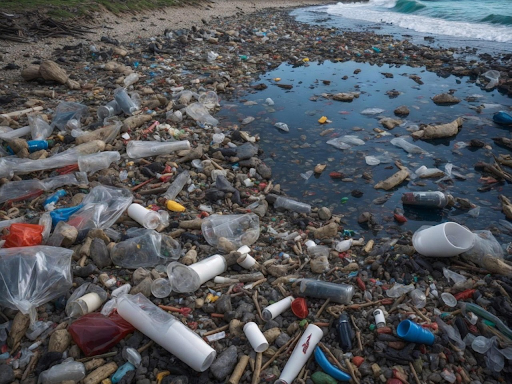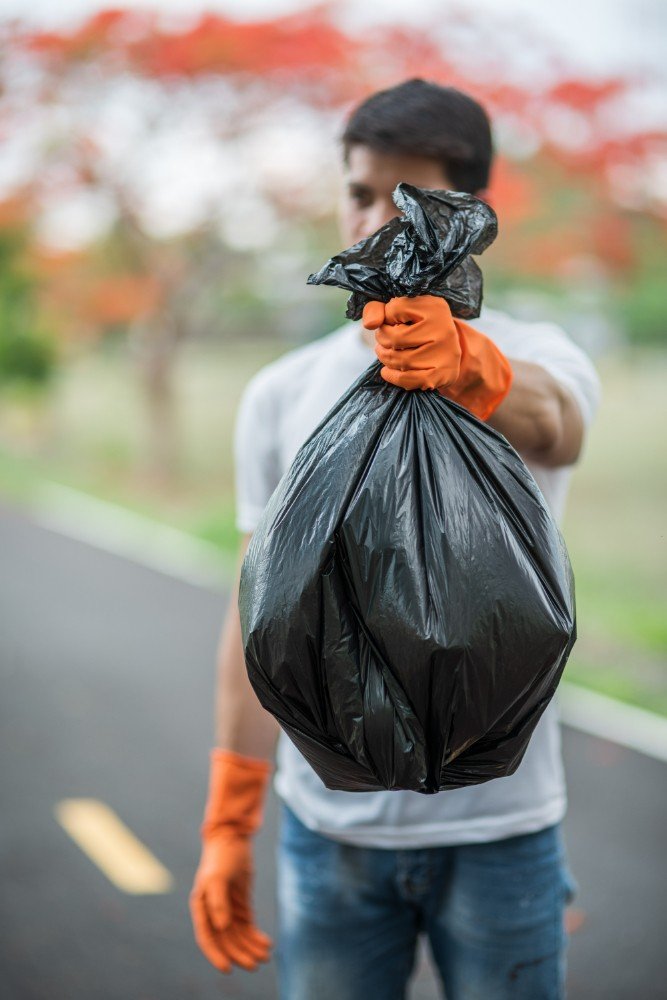Plastic waste has now become one of the most pressurising environmental threats of our time. As every year passes by, millions of tons of plastic end up in the oceans, creating a severe threat to marine biodiversity.
The kind of impact of plastic pollution in marine ecosystem can extend beyond litter and affect everything starting from tiny planktons to whales. This type of growing crisis certainly demands immediate global awareness and action.
Keep reading as we explore the ways affects plastic pollution in marine ecosystem and the possible solutions to combat it.
What is Marine Plastic Pollution?
Marine plastic pollution happens when plastic debris enters into seas and oceans, threatening both aquatic life and ecosystems. This type of waste includes single-use plastic waste like bottles, bags, and packaging materials.

Fishing nets and microplastics found in the ocean are part of this type of plastic pollution. All these kinds of plastics can never decompose themselves, and they tend to break down into particles that can linger for hundreds of years.
Microplastics, especially the tiny plastic particles under 5mm, are particularly dangerous. They get collected from larger plastics that can degrade over time, or get manufactured in this size for various uses in cleaning products and cosmetics.
These plastics are most often invisible to the human eye and can create devastating consequences for marine organisms and even the food chains.
The Effects of Plastic Pollution on Marine Life
Ingestion of Plastic by Marine Animals
Marine animals tend to mistake floating plastic materials for food. For example, sea turtles tend to confuse plastic bags with edible jellyfish. Seabirds tend to feed on bottle caps and other kinds of microplastics.
It’s a common misconception happening around them, causing them to understand the difference between what they can consume and what they cannot. There are cases where whales were found dead with stomachs full of plastic debris. They might have consumed it as a sign of food or out of starvation.
This kind of ingestion certainly causes blockages in their digestive system, further leading to internal injuries and even death. Toxic chemicals found in plastics accumulate inside their tissues, further creating long-term health consequences and potential reproductive failure.
The impact of plastic pollution on marine life is both chemical and physical, leaving no part of the food chain unaffected.
Entanglement and Harm to Marine Mammals
One more deadly effect of plastic pollution in oceans is entanglement. Discarded fish ropes, nets, and plastic packaging can eventually trap marine mammals and sea turtles.
Marine animals do find it difficult to feed, move, or escape from predators. For some, the entanglement can result in amputations, drowning, or infections.
The kind of effect plastic has on marine life includes severe stress and trauma. Seals, dolphins, and manatees are some of the most affected marine animals. They tend to get injured, which can be fatal, which indeed contributes to the declining population of several marine species.
Disruption of Marine Ecosystems
Plastic pollution in oceans has the tendency to alter the function and structure of the marine ecosystems.
Vital biodiversity hotspots, coral reefs suffocated by plastic debris that blocks their sunlight visibility and brings in harmful pathogens as well. This type of disruption to photosynthesis accelerates coral bleaching.
Moreover, plastic waste tends to create artificial habitats that can attract invasive species that can upset the natural balance.
All these disruptions can only further lead to the collapse of the entire ecosystem. It affects the livelihood of coastal communities that highly depend on marine resources for their needs.
How Plastic Pollution Affects the Food Chain
Plastic particles are most often consumed by plankton, which is understood as the foundation of the marine food web. All the plastic particles then further on pass through small fish to large predators and end up for human consumption.
BPA and phthalates are some of the toxic substances found in plastics that intend to accumulate at each level.
Humans consuming seafood might ingest microplastics, followed by unknown long-term health risks. This certainly proves the fact that how marine plastics tend to affect not just the wildlife, but also our own health and food security.
Contaminated shellfish and fish are now easily available in markets, signaling a silent, yet alarming crisis.
The Scale of plastic pollution in marine ecosystem
Globally, nearly 11 million metric tons of plastic enter the ocean every year. This particular figure is expected to triple by the year 2040, especially if no kind of action is taken to control them.
About 700 marine species have been documented to be affected by potential marine pollution. Poorly managed plastic waste from coastal tourism, urban centres, and rivers is some of the key contributors to plastic pollution.
Solutions to Combat Plastic Pollution in the Ocean
Global and Local Government Actions
Governments worldwide have started addressing plastic pollution through regulations and policies. The European Union has now banned several single-use plastics. India has even initiated a phased ban on plastic product usage. Cities around the United States have enforced plastic bag bans.
All these policies aim to reduce plastic waste sources and promote responsible consumption for all. However, public compliance and enforcement remain the major challenges.
National regulations and international agreements are the need of the hour to ease the marine plastic pollution situation.
Ocean Cleanup Efforts
Technological innovations do help in marine conservation efforts. Initiatives taken under the Ocean Cleanup project aim to remove large patches of plastic debris from oceans that tend to float as barriers for marine animals.
NGOs have been conducting educational campaigns, beach cleanups, and community outreach programs to make humans aware of plastic pollution and reduce its usage in their day-to-day lives.
Reducing Plastic Production and Consumption
The root causes of plastic pollution are overconsumption and overproduction. Reducing both the use and production of plastic, especially single-use items, is crucial.
Encouraging the use of reusable materials and biodegradable alternatives can bring in a significant cut down on plastic waste.
Businesses need to contribute toward reducing plastic production by adopting sustainable packaging. Consumers must be conscious of their choices and avoid handling products that are wrapped in unnecessary plastic.
Addressing plastic recycling challenges like cost and contamination is also essential for creating a circular economy.
How You Can Help: Steps Towards a Cleaner Ocean
Every human individual has their contribution in reducing plastic waste.
As a human being, you must start by,
- Cutting down on single-use plastics, carrying your own bottles, bags, and containers.
- Support brands that are known for using sustainable packaging and encourage businesses that tend to go green in their whole production and supply process.
- Participate in local cleanup drives to better understand waste management policies and to spread awareness in your neighborhood.
Any kind of simple lifestyle change that you do in your daily life can lead to a massive collective impact in saving our oceans from plastic waste.
Conclusion
The impact of plastic waste on marine ecosystems is now beyond normal reach. Starting from the ingestion and entanglement of marine animals to food chain and ecosystem disruption, plastic pollution found in the ocean can affect us all. The situation is now critical but not hopeless.
At Northamps, we have been continuously working toward creating sustainable solutions that promote marine conservation efforts.
We have been raising awareness about the importance of protecting our oceans. Through effective policies, responsible choices, and global cooperation, we can safeguard marine life for future generations together.


